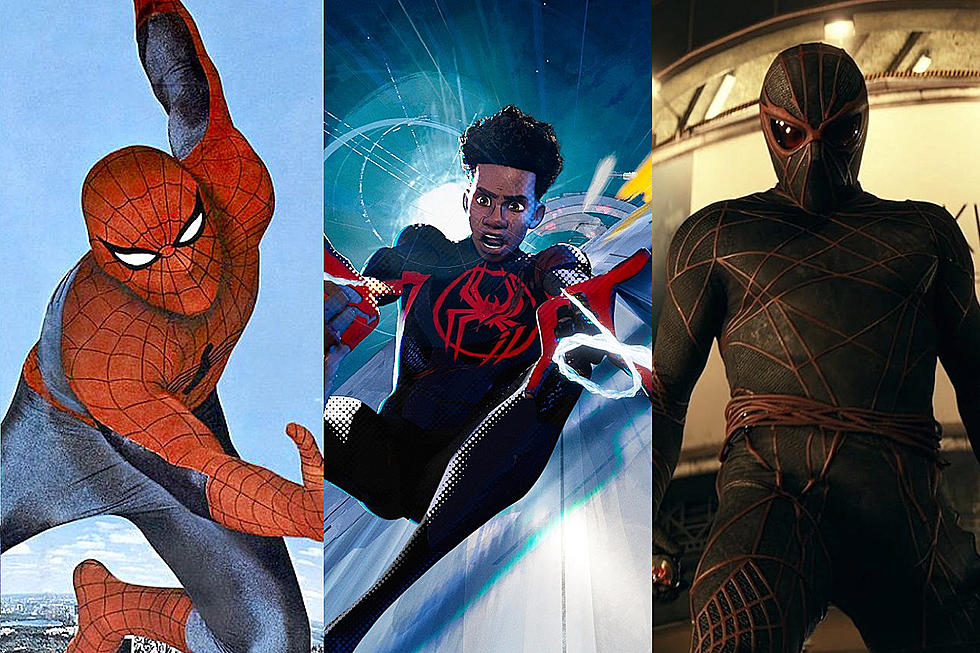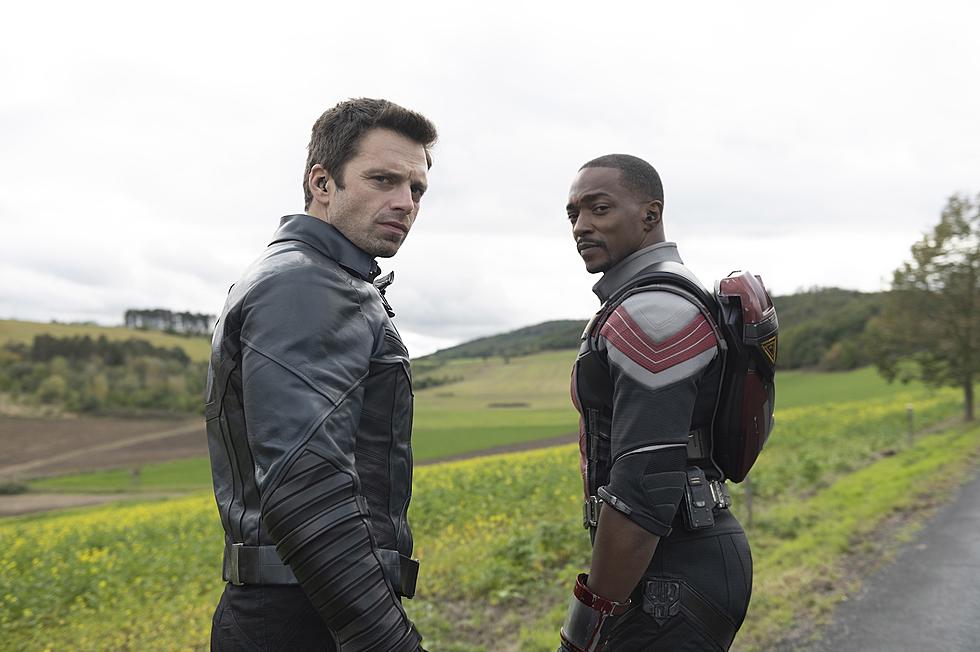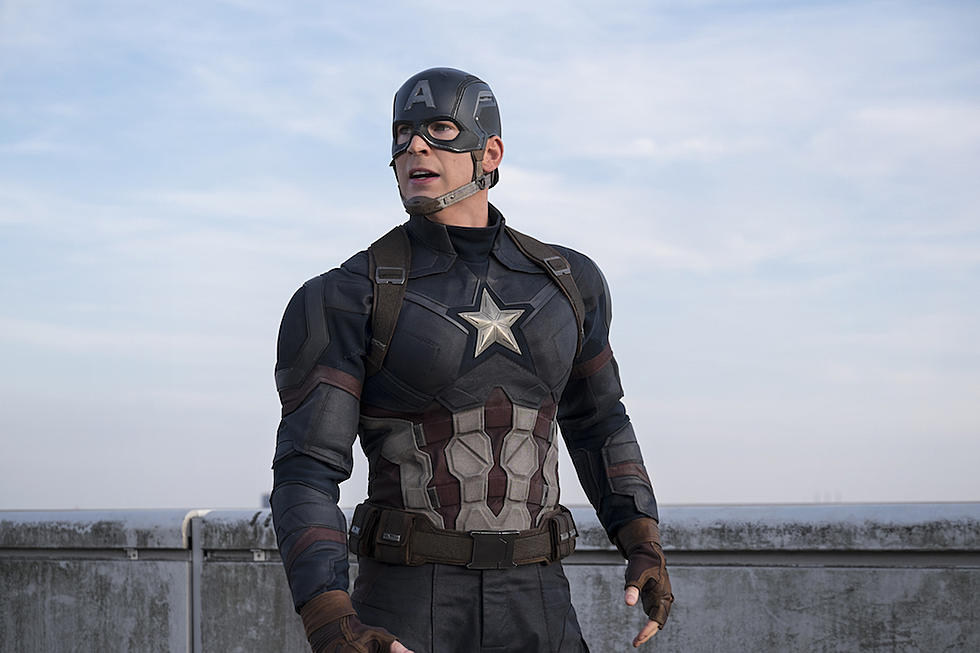
Hot Ink Reviews – Captain America #605, Ultimate Comics Avengers 2 #1, The Last Days of American Crime #2, The Last Unicorn #1, Marvel Zombies 5 #2
ComicsAlliance reviews the biggest, best, and most interesting comics that hit the shelves this week. SPOILERS FOLLOW.
MULTIPLE CHOICE AMERICA - Captain America 605/ Ultimate Comics Avengers 2 #1

This week marks the conclusion of Ed Brubaker and Luke Ross' "Two Americas" arc in "Captain America." The story of new Captain America Bucky Barnes clashing with the Captain America of the 1950s and the extremist right-wing militia group the misguided Cap has joined with has triggered debate about the collective identity of the United States both within the comic and in the outside world. And it's only natural that wherever Cap and his star-spangled red, white and blue shield go, such discussions will follow. Created during wartime as a powerful symbol, Cap has often served as an idealized patriot that ordinary Americans could aspire to be like. It's a significant burden, both in-universe for the character and in reality for Marvel and the writers and artists given the responsibility of telling his stories.
"Two Americas" has attracted a lot of controversy because it can be interpreted in a way that suggests the linking of right wing Tea Party protesters with support for the militia forces bent on committing acts of domestic terrorism that Bucky's fighting. The final issue begins with Bucky as hostage, forced to wear his old sidekick costume and act as a propaganda piece for the bad Cap or else the militia will kill his friend Sam "The Falcon" Wilson. But even when Sam's freed Bucky's troubled by his fight with the other Captain America. Who he dubs "Captain Unamerica" in a line packed with enough cheese to melt on top of several dozen slices of wholesome mother-prepared apple pie.
Bucky knows that this man, though misguided to the point of crazy, has always been motivated by a desire to do what he believes to be the right thing. Bucky respects that, and wishes that there was some way to resolve the conflict without resorting to violence in the way he's being forced to. And, in a way, that's a good metaphor for what we, as Americans, aspire to in our political discourse. We want to believe that when we disagree with one another, those disagreements are between people who all, at our cores, want to do the right thing. We simply disagree over what that right thing is, thus requiring negotiation. We would prefer that this is true rather than the alternative, that the disagreements are between people selfishly doing what they know is wrong and not caring. In another way, though, it's a terrible metaphor because in superhero comics ideological arguments tend to be depicted and resolved via combat, which in the real world is exactly the sort of thing the arguments are supposed to avoid.
But if Captain America is what the United States aspires to be, it also isn't necessarily what it is. America is many things to many people, both within its borders and without. And many citizens of other countries, watching the U.S. enact its international policy, perceive the nation as something more like another superhero. Namely, The Punisher -- an unhinged gun-toting fanatic who goes around killing anything it recognizes as an evil-doer with only secondary concerns for the collateral damage. Something along the lines of the first eight or so pages of "Ultimate Comics Avengers 2" #1, written by Mark Millar with art by Leinil Yu.
The start of a new arc for Millar sees the Ultimate Universe version of Frank Castle captured by Nick Fury and enlisted into Fury's black ops squad as that team's equivalent of Captain America. Frank even gets suited up in a brand new costume that blends his black skull with the stars and stripes of Cap's outfit. It's yet another clever Mark Millar idea, although admittedly not as clever as when Matt Fraction did the exact same thing during "Punisher: War Journal" in the aftermath of "Civil War" less than four years ago. If Millar explores that idea on a global stage, I will admit there's some potential for a good story there. I'll be keeping an eye on this run.
DUCK TALES: LOCK AND LOAD - Marvel Zombies 5 #2

I'd previously talked about the first book in the latest "'Marvel Zombies" series and how excited I was by the team of Machine Man, the lovable alcoholic robot hero with a disdain for fleshy humans, and his partner, special government zombie-killing agent Howard the Duck. But as of the last issue it was mostly an idea, and there hadn't been much of a chance to see the team in action. Now, with issue 2, the pair has been joined by super-powered cowgirl Jacali Kane, a refugee from the wild west world they visited, and moved on to a world ravaged by H.G. Wells-inspired Martians. Now we get to see them in action. And it is every bit as glorious as I'd hoped.
Writer Fred Van Lente had three challenging tasks laid out in front of him. First, he had to live up to the fantastic new comedic direction Warren Ellis pushed Machine Man's character into during "Nextwave." Second, he had to take Howard the Duck, one of the more forgotten characters in the Marvel Universe (often intentionally so) and both make him interesting and make him fit. And last, he had to make a book about zombies not boring in a comics market clogged with them. He succeeds on all three counts.
Machine Man is as good here as he was in "Nextwave," spouting one-liners on putting up an organ-sack hating tough robot facade while unable to deny his inner call to be a hero. And after Van Lente and writing partner Greg Pak were able to surprise me by taking the under-used Hercules and making him into one of the most interesting characters in Marvel's line, Van Lente is making Howard the Duck a fun action hero that's making me care about a character I never, ever thought I'd like as much as I do now. Finally, he's able to tell a story that walks a fine line between horror and absurdity, ducking onto either side of the line adeptly. He's helped by the artwork of Kano, who's able to to both a frightening zombie and a comedic Howard from panel to panel as needed.
Also there's a Gauntlet joke. I have a weakness for those and was surprised at how much of a chuckle it triggered. Blogger needed Gauntlet joke badly.
AND THE LAST SHALL BE NEXT - The Last Days of American Crime 2 / The Last Unicorn 1
 IDW's "The Last Unicorn" #1 and Radical Comics' "The Last Days of American Crime" #2 share the distinction of being two of the higher profile releases this week by companies other than the Big Two. As well as the obvious similarity of having the first two words of their title in common. And so with that in mind I set about to discover what other likenesses existed between the two.
IDW's "The Last Unicorn" #1 and Radical Comics' "The Last Days of American Crime" #2 share the distinction of being two of the higher profile releases this week by companies other than the Big Two. As well as the obvious similarity of having the first two words of their title in common. And so with that in mind I set about to discover what other likenesses existed between the two.
Yeah, turns out that's about it.
Which isn't a particularly surprising discovery. "The Last Unicorn" is the premiere issue of a six-part series adapting a beloved fantasy novel by Peter S. Beagle about a unicorn who sets out on a journey to discover the rest of her kind. The artwork is by Renae De Liz with colors by Ray Dillon, with the original work adapted into its serialized graphic novel form by Peter B. Gillis. "The Last Days of American Crime" is the second in a three part series by Rick Remender with art by Greg Tocchini. It tells the story of a three-person heist team plotting a major robbery before a government mind-control broadcast is activated, eliminating an individual's ability to choose to knowingly break a law.
One of the two is a 22 page story, 19 pages of which feature a magical glowing fantasy creature. The other is 48 pages long and features 46 profanities, and that's only going by the rather conservative George Carlin classification system. Plus there'd be one more if the speaker wasn't interrupted mid-statement by a bullet/head interaction. Although I guess he might have simply had a thought for his mother in his final moment. Anyway, one book features a butterfly who speaks mostly in song lyrics. The other has no less than fifteen brutal murders. One has a scene with an adorable puppy. The other has mentally disabled child starting a gunfight with a relative that ends with him getting shot in the head.
So I'm going to give my thoughts on both titles despite the fact that the only thing they seem to share is a pervasive sense of the entropy of the human spirit, the idea that we are a doomed people living in an age made tragic by the fact that it is sadder and less glorious than those that have come before. But in the interests of keeping things from becoming too drastically different in tone the section on "The Last Days of American Crime" may be presented in a more all-ages friendly tone. And my comments on "The Last Unicorn" could be slightly punched up in order to match its grittier, edgier, counterpart.
 As mentioned earlier, "The Last Days of American Crime" was visited by the magical cuss fairy from the grove where the cockle plants grow and she liberally sprinkled her obscenity dust willy-nilly all over the place. I'm not the sort of person who's bothered by profanity being thrown around like sprinkles on a sugar cookie, but I do get miffed when it's so pervasive that the words lose almost all meaning. Which is the case here. But that's actually a minor point compared to my two main complaints about the book.
As mentioned earlier, "The Last Days of American Crime" was visited by the magical cuss fairy from the grove where the cockle plants grow and she liberally sprinkled her obscenity dust willy-nilly all over the place. I'm not the sort of person who's bothered by profanity being thrown around like sprinkles on a sugar cookie, but I do get miffed when it's so pervasive that the words lose almost all meaning. Which is the case here. But that's actually a minor point compared to my two main complaints about the book.
First, there's the fact that the intriguing premise serves more to motivate the actions of the protagonists than as a path to any deeper questioning of individual rights and free will. The fact that the U.S. government is about to remove its citizens' ability to choose to break any law in any way is barely touched upon at all. The idea drew me into the series, but from there it's a only a crime thriller where the characters beat, stab and shoot the freaking spit out of one another. And with two of its three issues completed, playing up the mind control stuff in book three would be too little, too late.
My other problem with the series is Greg Tocchini's artwork. It sets the tone of the world well, but unfortunately many of the characters look quite similar, and in combination with the more egregious issue of characters' faces being drawn inconsistently it becomes a significant hassle to keep characters, minor ones in particular, straight. I'd had higher hopes for this series, but so far it's been nothing but visits from the Gnome of Underwhelming Letdowns.
"The Last Unicorn," on the other hand, seizes you by the throat and proceeds to stab you repeatedly in the face with razor-sharp cutesiness. I've never read Beagle's classic novel, which I'm sure makes me a degenerate with an unfortunately neglected childhood, but let's move past that and talk about the comic adaptation. It kicks down your door and takes no prisoners in its unending crusade of relentless adorability. The titular unicorn glows in almost every panel and its eyes triple-glisten with a dewy shine. De Liz and Dillon combine to make a formidable team and their artwork is gorgeous. If you like unicorns and lush fantasy landscapes. And that's obviously not going to suit everyone's particular tastes.
Although when you think about it, unicorns are creepy. They're basically horses with a shiv attached to their forehead and an unseemly interest in very young girls. This book, however, refuses to examine such previously unexplored questions in favor of taking the standard line on unicorns, i.e. impossibly pure creatures representing innocence and nature and love and happiness and all that is good. Because I've got no attachment to the source material and find the level of cuteness on display here well past my tolerance levels, I can't say that it's my thing. But there will certainly be readers, particularly those with a fondness for the novel, who may find this to be exactly what they're looking for.
More From ComicsAlliance









